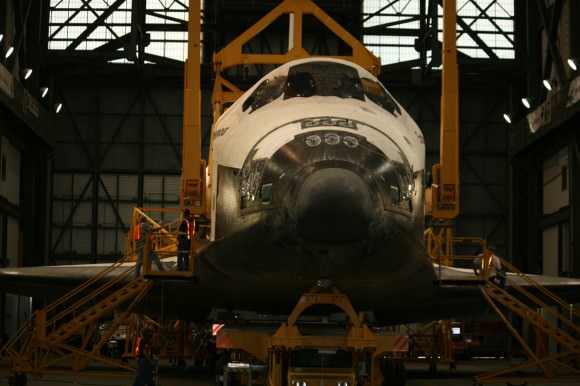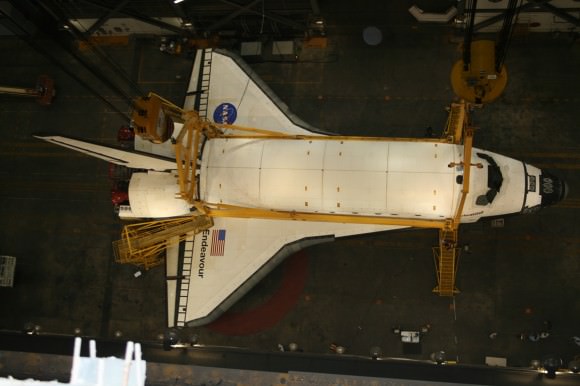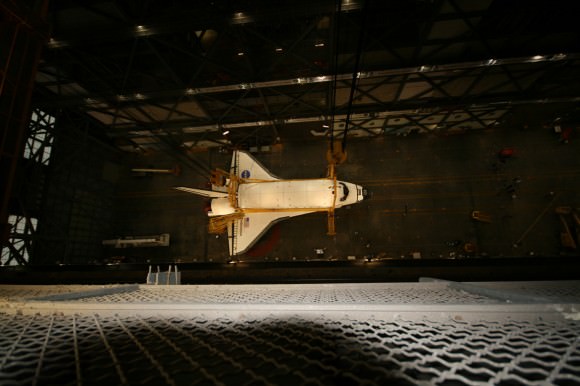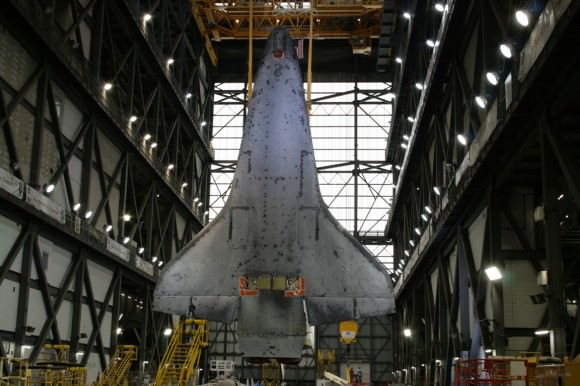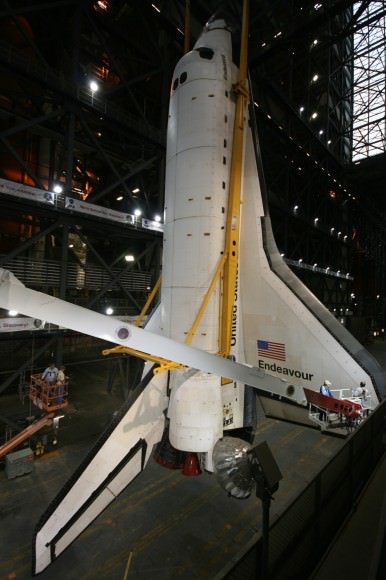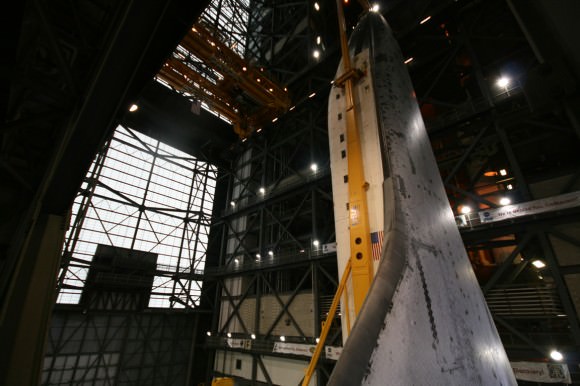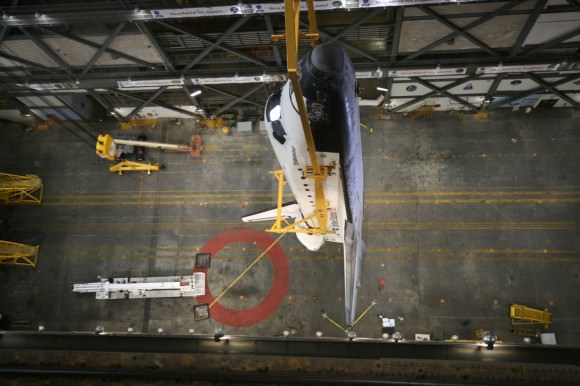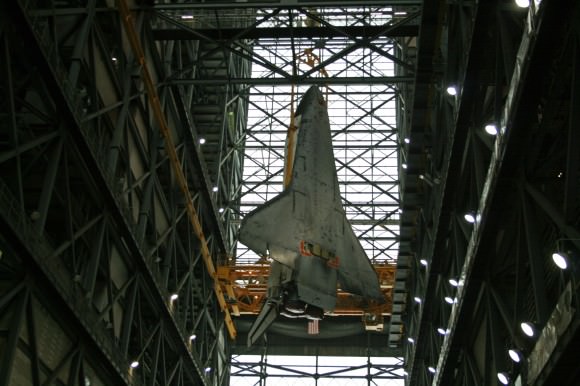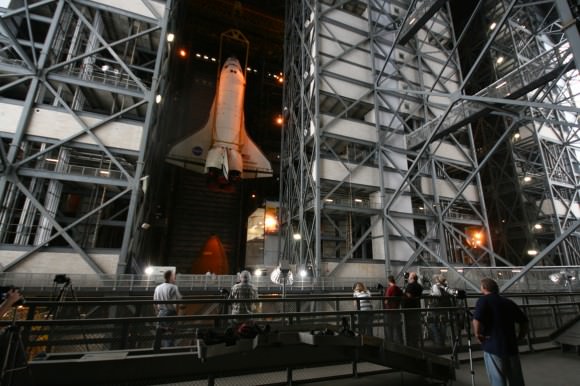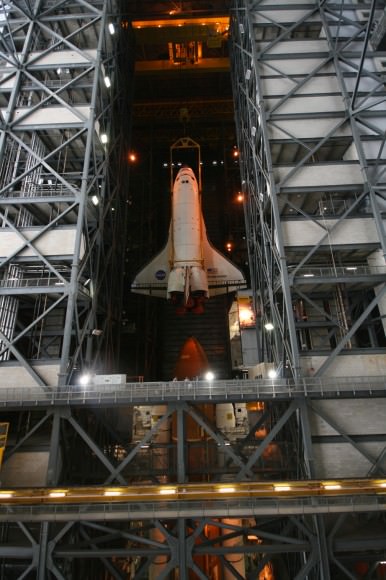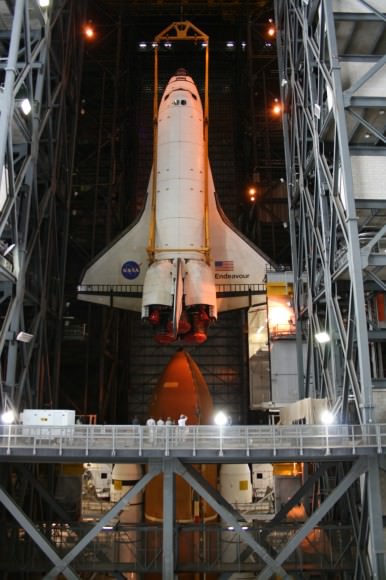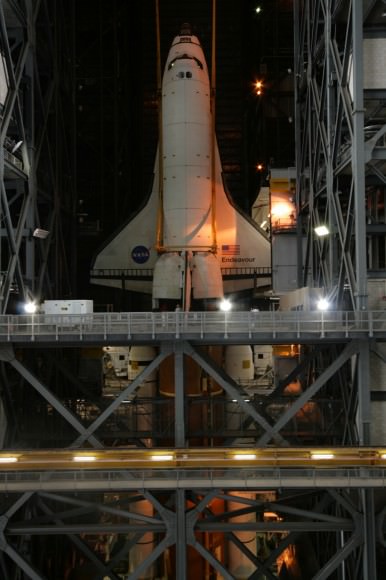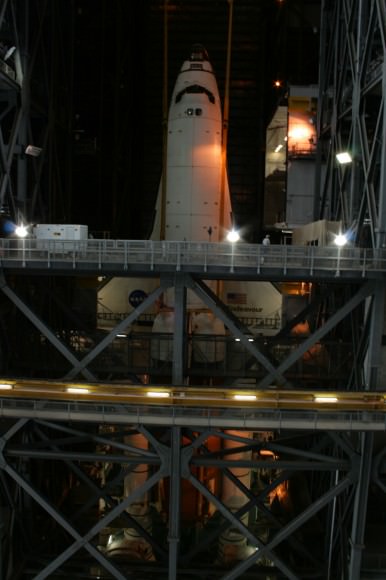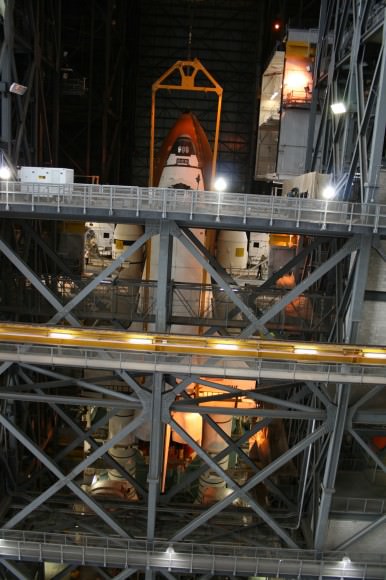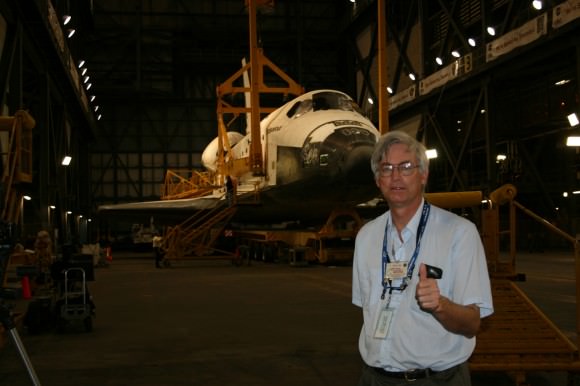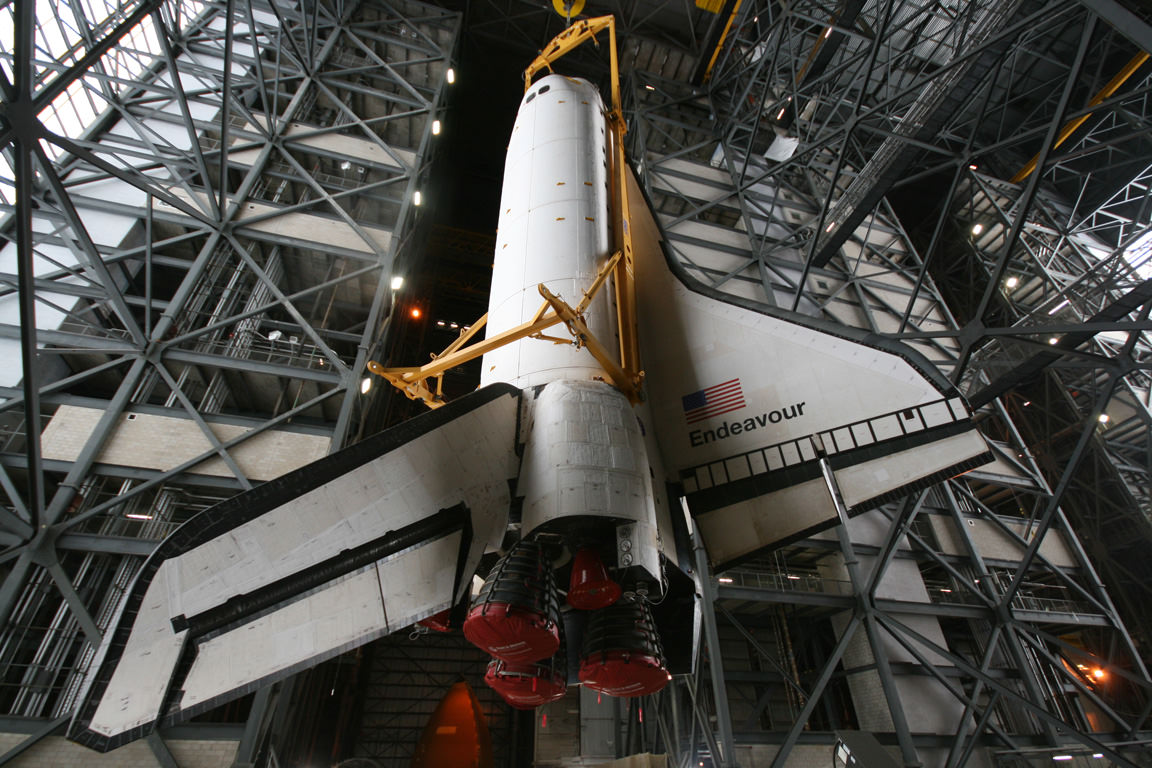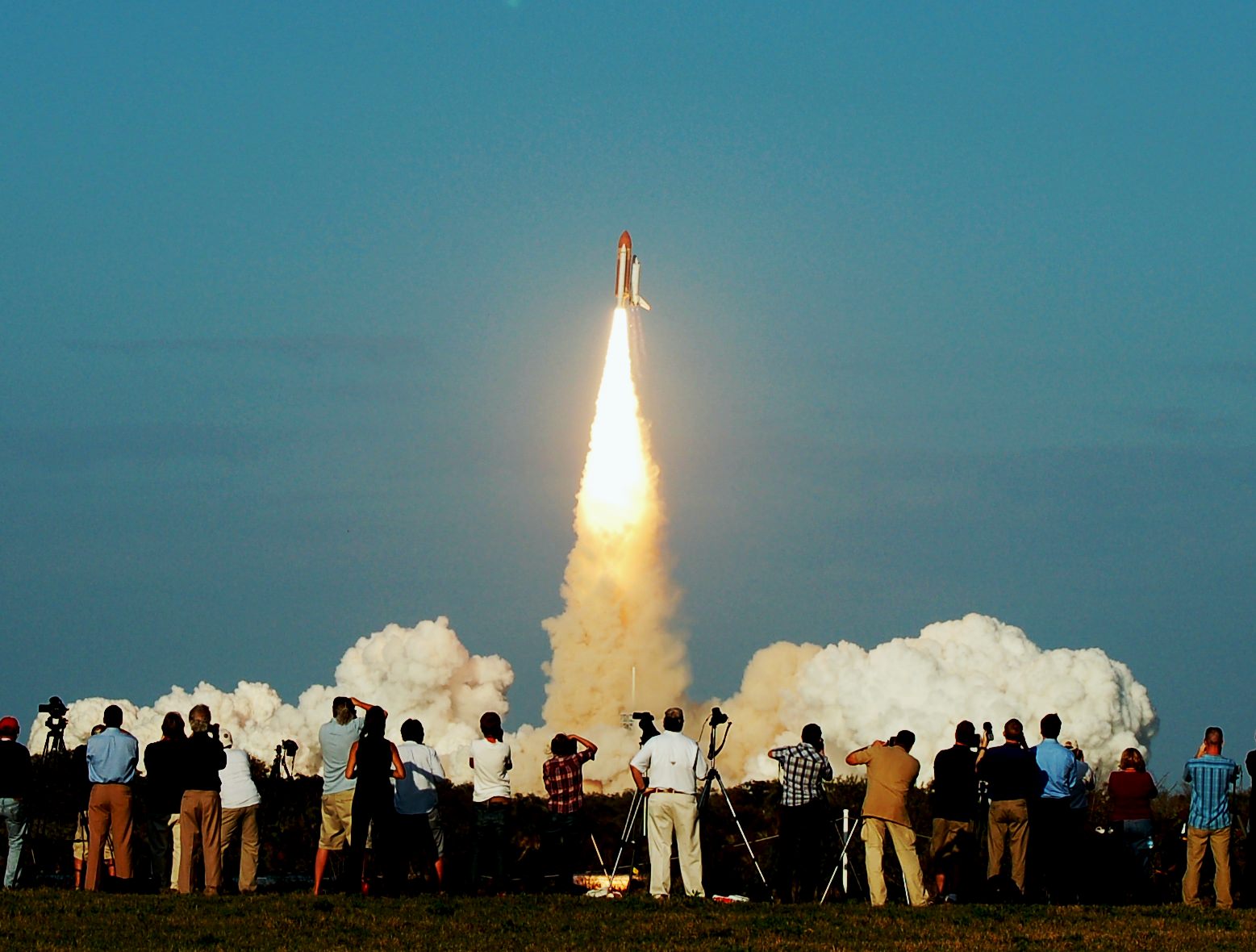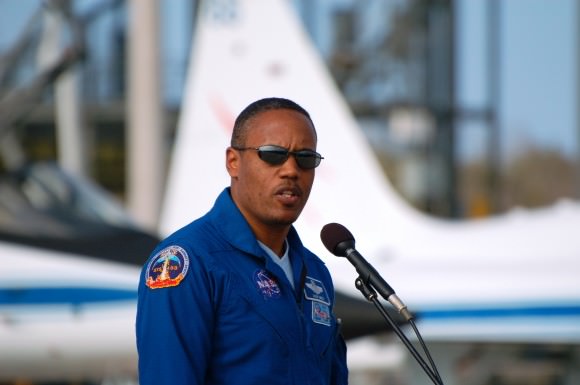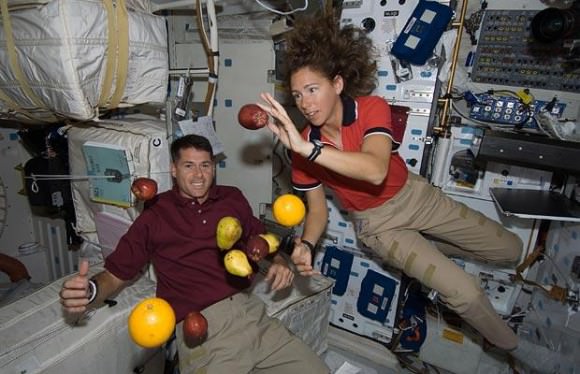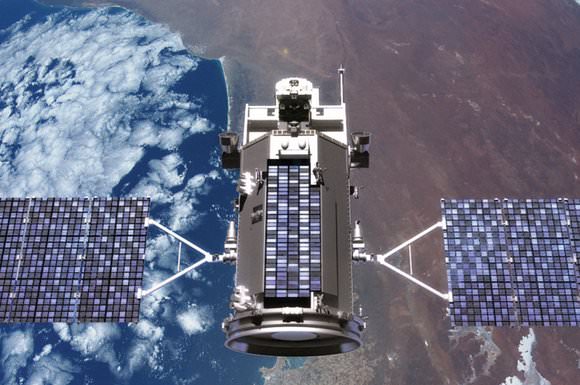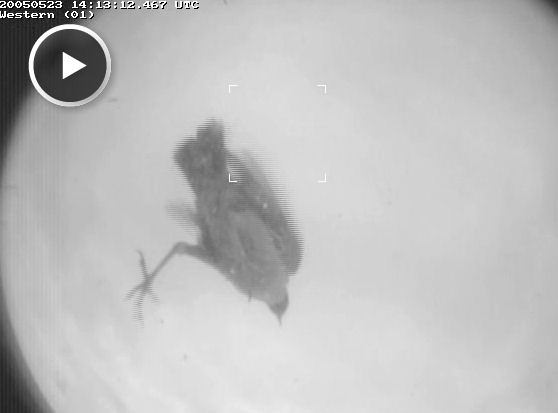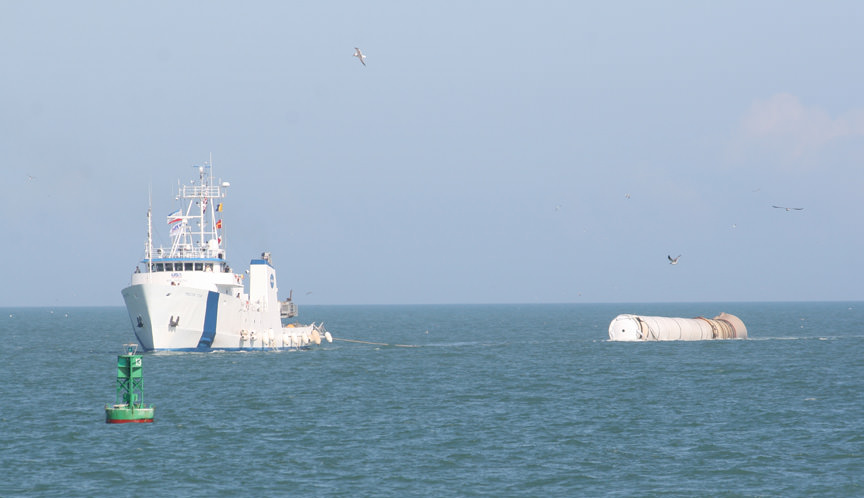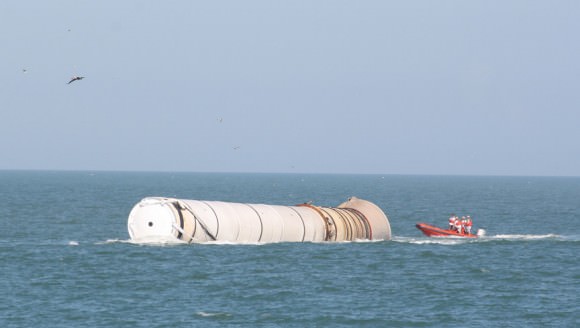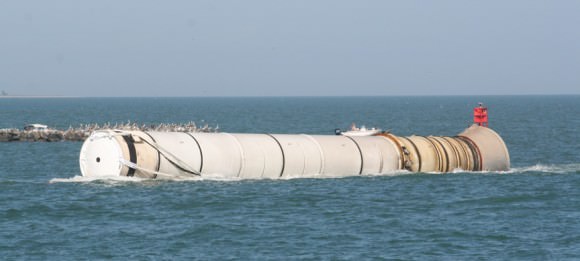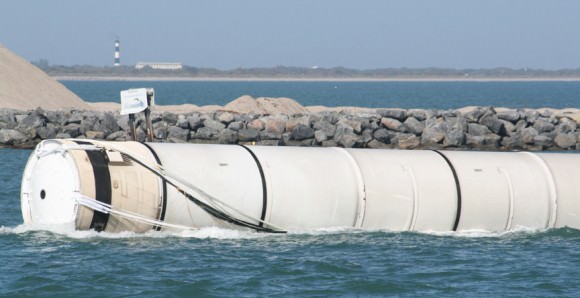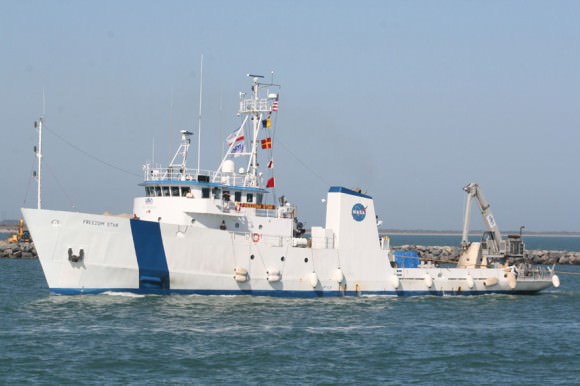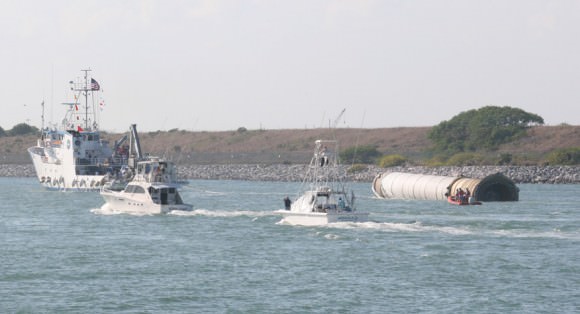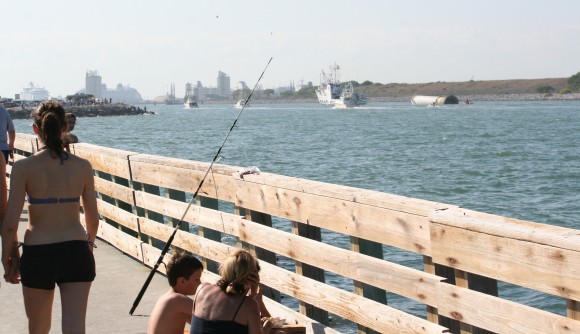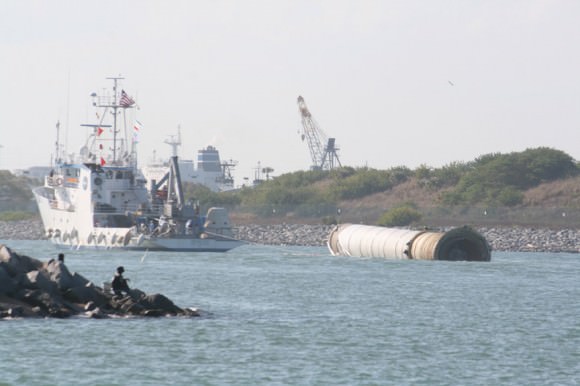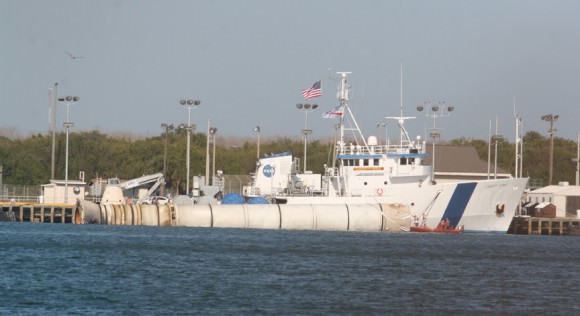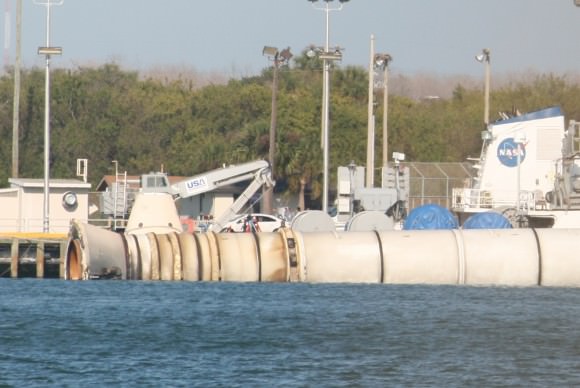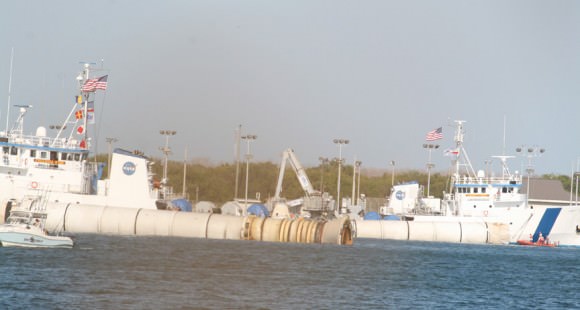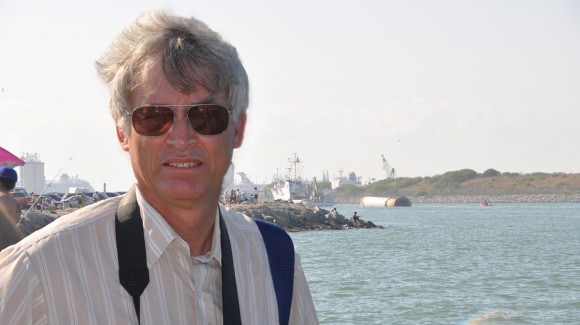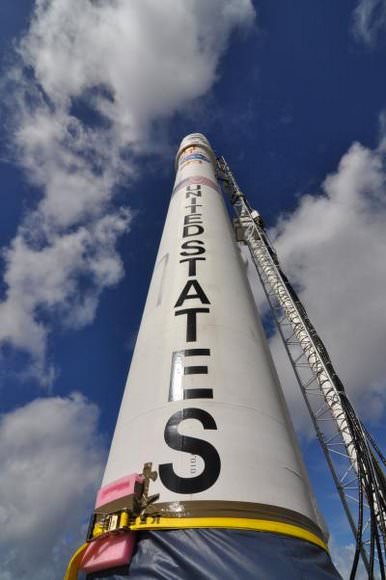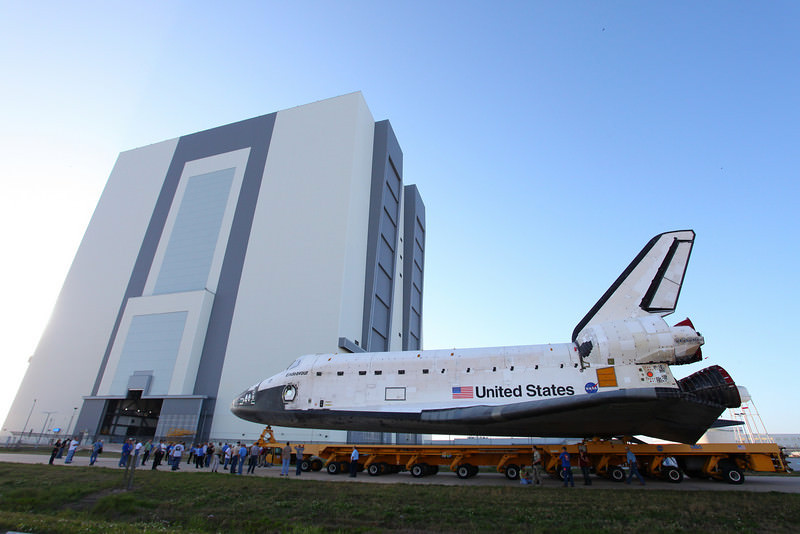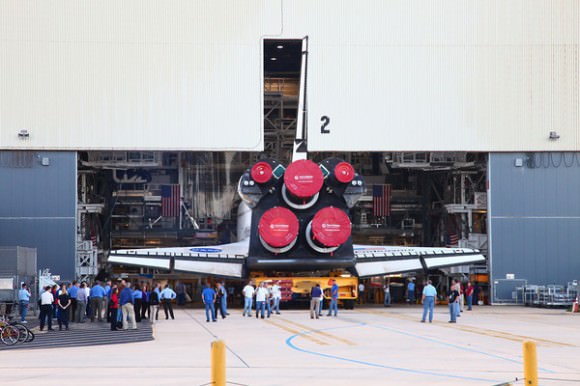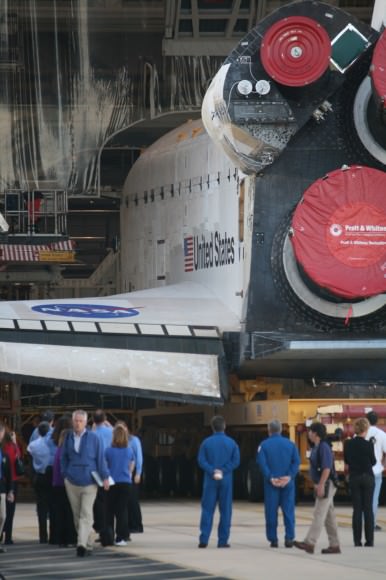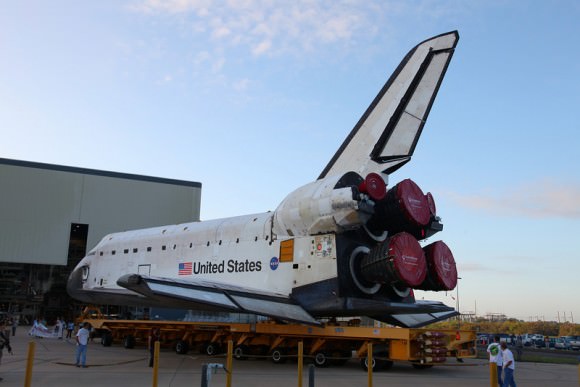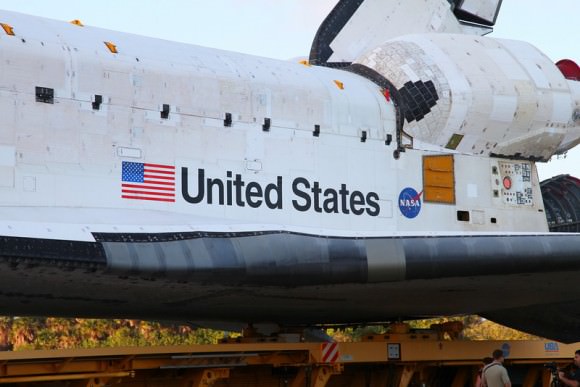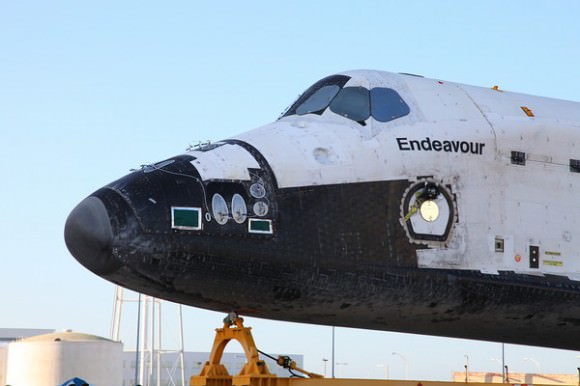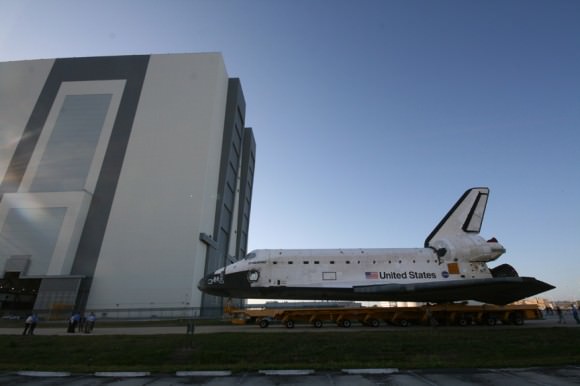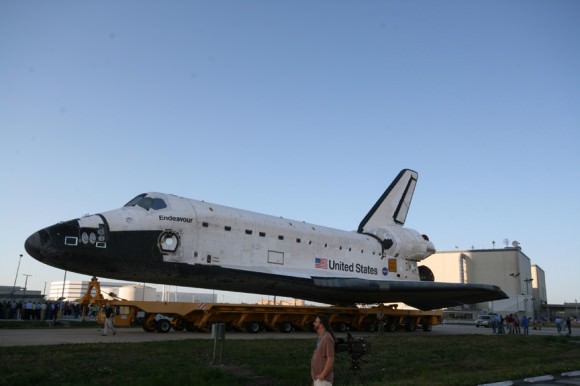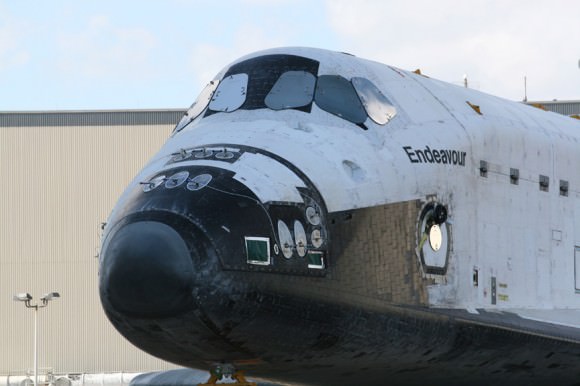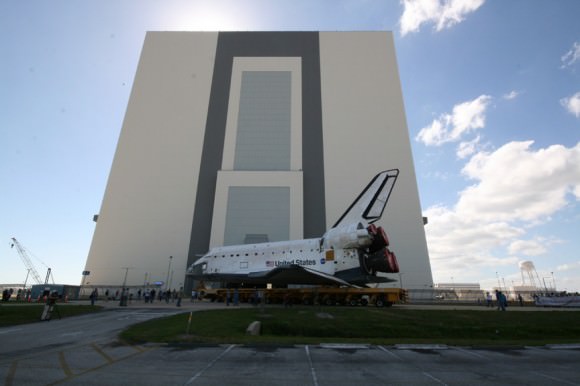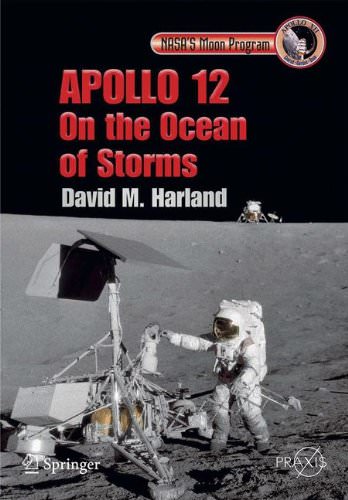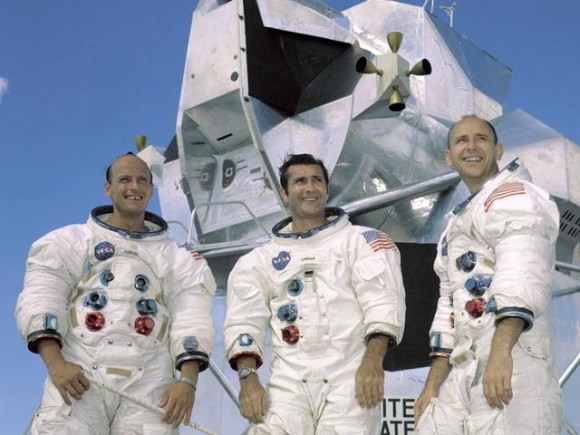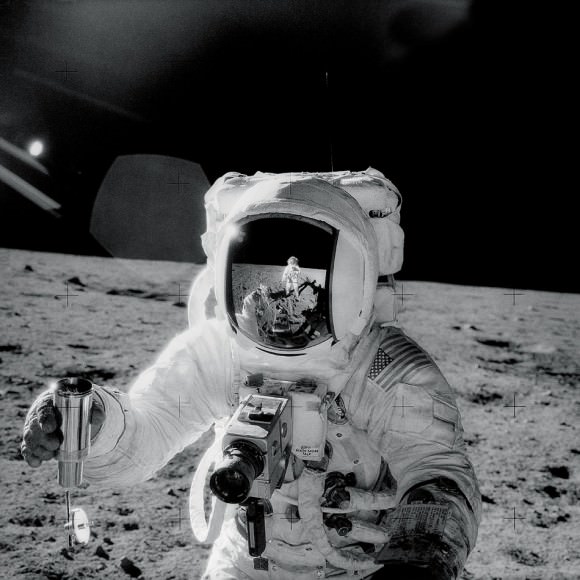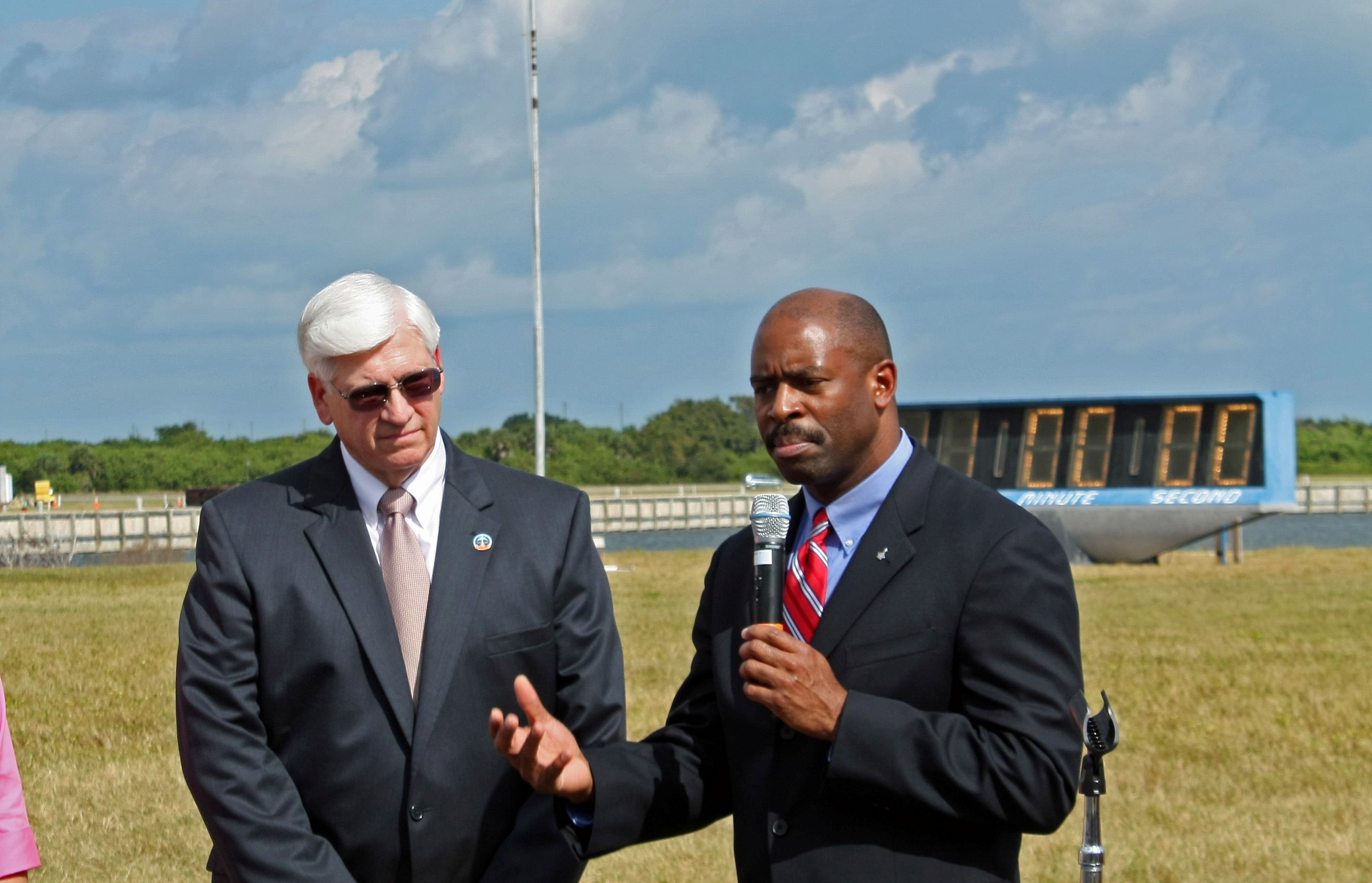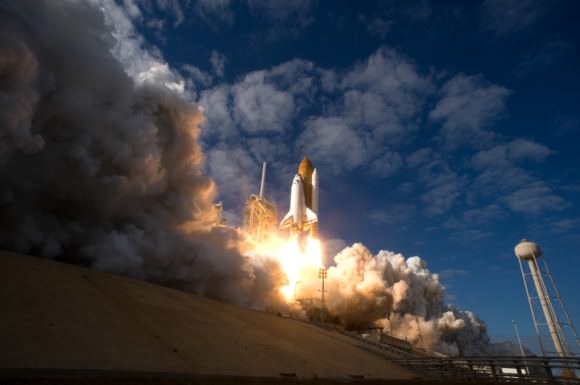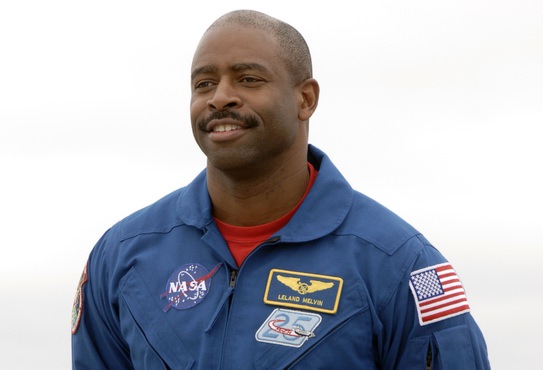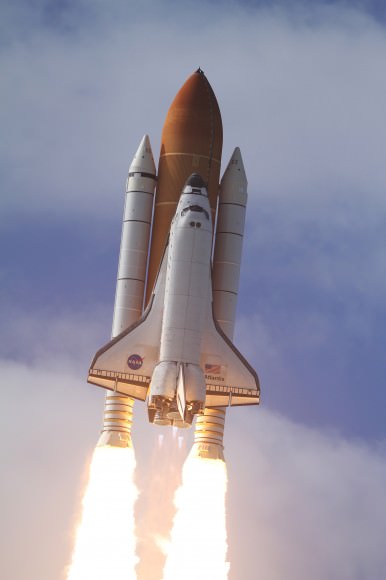[/caption]
For the final flight of Space Shuttle Endeavour, I was privileged to be one of the lucky few to be an eyewitness to how the orbiter was hoisted and attached for the last time to the External fuel tank and twin solid rocket boosters that will power her last ascent to space on the STS-134 mission . Thereafter she will be retired from active duty service.
“Lift and Mate” is the formal name for the nearly day and a half long intricate process to join Endeavour to the fuel tank and rocket boosters and took place after the orbiter was hauled inside the 52 story Vehicle Assembly Building atop a 76 wheeled transporter on Feb. 28.
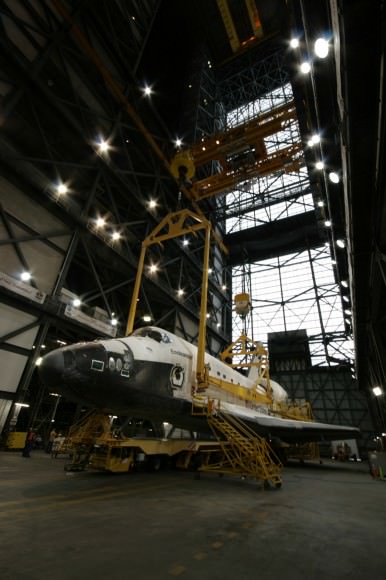
Lift and Mate is a jaw dropping and unforgettable experience because you see the orbiter suspended in mid air as though it was flying in space. While hanging in the air by thin cables, the 100 ton orbiter is reminiscent to me of what astronauts on the International Space Station surely see as the shuttle approaches for docking.
Following the shuttles rollover to the VAB on top on the transporter, technicians initially attached a large yellow, metal sling to Endeavour in the center area of the VAB – known as the transfer aisle.
Endeavour was then slowly and methodically hoisted on pulleys and chains into the vertical position. The tail came to rest just a few meters from the hard and unforgiving concrete floor. The orbiter was then lifted up to the VAB ceiling and carefully moved over walkways into High Bay 3. Media including myself watched this entire process in total awe from several different levels inside the VAB as Endeavour was lifted past us from just a few meters away.
The final step was to lower Endeavour into position for mating to the fuel tank and solid rocket boosters already awaiting her arrival.
Its hard to believe I was really an eyewitness to this majestic event and also sadly realize it will never happen again.
“The orbiter has a lot of life left in her,” said a top shuttle manager to me. “The shuttle could fly many more missions.”
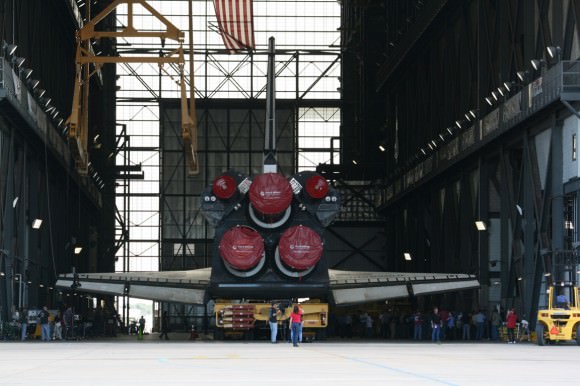
NASA will rollout Endeavour to Launch Pad 39 A on March 9 following the landing of Space Shuttle Discovery.
The STS-134 mission will be the 25th and final flight for shuttle Endeavour. Launch is set for April 19. Endeavour will haul the $2 Billion Alpha Magnetic Spectrometer (AMS) to orbit and attach it to the ISS. AMS will search for dark matter and seek to determine the origin of the universe.
Check out the majestic views of “Lift and Mate” for Space Shuttle Endeavour in my photo album herein
Final “Lift and Mate” of Space Shuttle Endeavour. Photos by Ken Kremer
